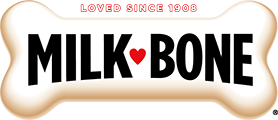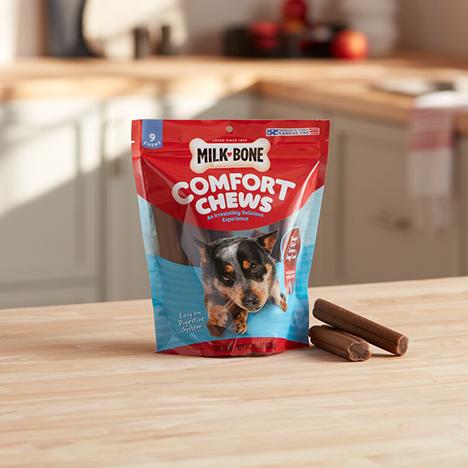7 Tips to Help Support Your Dog’s Agility
Agility is most often thought of as a competitive sport for dogs. But you and your dog don’t have to compete to enjoy agility, and your dog certainly doesn’t have to be an obstacle course champ to have champion-level agility skills. If you’re an outdoorsy person, it’s likely that your furry best friend is outdoorsy too. And getting regular exercise is one of the best ways to keep you both in tip-top condition. Here are some more tips for supporting—and even improving—your dog’s agility.
Tip 1. Keep him lean
Staying trim is just as important for your dog as it is for us humans because excess weight can put stress on joints and ligaments, which can lead to injuries. Ask your vet for your dog’s optimal weight and try to stick to it with plenty of exercise and a healthy diet.
Tip 2. Start the day right
Milk-Bone Good Morning® Daily Vitamin Treats — Total Wellness are specially formulated dog snacks that provide beneficial nutrients, such as taurine, that help support cardiovascular health. Like the vitamins that we take, these little treats work best when taken every morning. So why not start tomorrow?!
Tip 3. Eat well
Nutrition is the key to good health. It affects everything your dog does—agility included. Ask your vet about your dog’s diet and what food she should be eating to get the nutrients she needs.
Tip 4. Warm up
If you plan to do any physically demanding exercise, such as running a long distance or rigorous ball fetching, start off with a trot or jog. This will warm up your dog’s muscles and help prevent muscle cramps or tears.
Tip 5. Cross-train
Keep things interesting for your dog by doing different activities or exercises. Go for long and short walks, and go jogging, running and even hiking together. The variety will keep your dog mentally and physically stimulated.
Tip 6. Keep watch
If your dog is injured, he will likely pretend that he’s OK. This is a survival instinct. So keep an eye on your dog’s behavior after exercising.
-
Watch out for abnormal stiffness as he sits down or stands up.
-
Look to see if your dog shifts his weight off one leg.
-
Rub your dog’s muscles and joints gently to check for unusual lumps or pain spots. It’s always best to catch an injury early and have a vet look at it to prevent it from becoming serious.
Tip 7. Rest and recover
If your dog does injure herself, make sure she gets plenty of rest and makes a full recovery before you embark on any other strenuous activities.
From the Dog Blog

Find out which dog breeds don’t shed. A must-read if you currently have dog hair on your clothes.

Canine kisses are the best—if your dog’s breath is as fresh as a spring morning.

Find out more about the wonderful nonprofit Canine Assistants from Gary Arnold.


